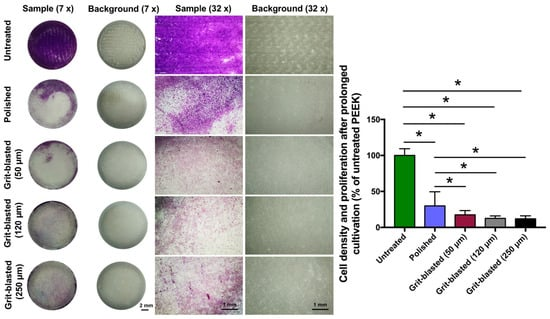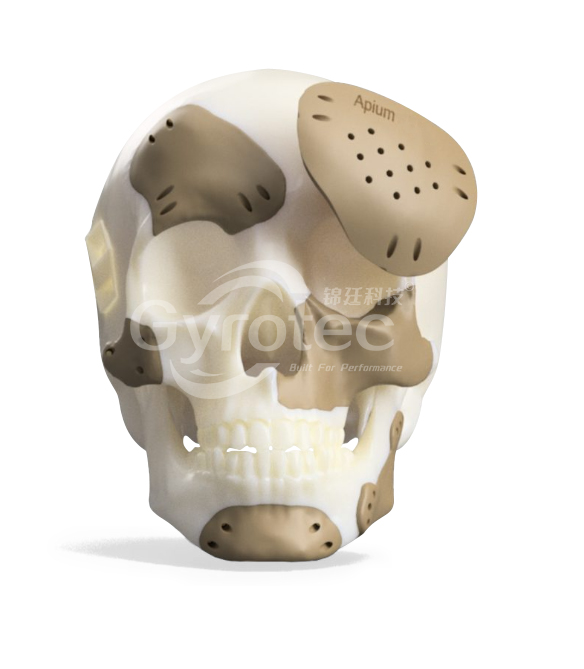The field of dental implants has always dealt with a variety of challenges, and as an important part of the medical field, dental implant materials need to constantly find solutions. Conventional materials may suffer from insufficient biocompatibility and unsatisfactory mechanical properties. In addition, implant materials are required to fit perfectly with the morphology of the patient's teeth in order to achieve a solid implantation. These challenges require an innovative manufacturing method that meets the high standards of the medical field, among others.
With the aging of the population and the development of dental implant technology, the demand for dental implant materials is increasing. However, traditional metal implant materials have problems such as mismatch of mechanical properties with natural bone tissues, artifacts in X-ray and MRI imaging, and large release of metal ions due to wear and tear during use. Therefore, the development of new dental implant materials with better biological properties has become a very important research topic.
The paper, titled "An In Vitro Study of Osteoblast Response on Fused-Filament Fabrication 3D Printed PEEK for Dental and Cranio-Maxillofacial Implants," was published in 2019 2019, with authors from the University of Tübingen, Germany, and the University of Basel, Switzerland, among others. The paper utilized fused filament deposition to print polyether ether ketone (PEEK) samples and examined the effect of different surface treatments such as polishing and sandblasting on osteoblast activity, in which the Apium P220 3D printer was used. It was found that untreated PEEK surfaces that retained print marks significantly increased the metabolic activity and proliferation of osteoblasts. This suggests that optimizing PEEK surface morphology using digital 3D printing technology is an effective means of improving its effectiveness in dental implant applications.
Apium P220 Technical Strength
Apium P220 offers technological advantages in terms of precise temperature control and multi-material adaptability:
1、Precise temperature control
The P220 utilizes an adaptive heat control system that monitors and regulates the temperature of the print head in real time. The system automatically adjusts the heating parameters according to material properties and environmental parameters to ensure precise temperature control of the material during printing. This is critical for printing high temperature engineering plastics such as PEEK. Accurate temperature control can effectively reduce printing faults and improve the success rate of printing.
2、Multi-material adaptability
The P220 is compatible with a wide range of common FFF 3D printing materials, including PLA, ABS, PETG, PC, PEEK and more. The printhead adopts an all-metal design with high temperature resistance to meet the printing requirements of engineering plastics. The unique printhead design also enables it to adapt to the rheology of different materials. Good multi-material adaptability allows P220 to realize fast switching between different materials.
3、High resolution
The P220 employs a closed-loop encoder feedback system for high-precision axis motion control. Minimum layer thicknesses of up to 0.05mm are available to meet the demands of fine printing. The high resolution allows the P220 to replicate the fine surface structural features of the design model, such as the layered pattern of the PEEK print in the figure below. This is important for studying the biological impact of different surface morphologies.

Figure 1. SEM images of the surface of FFF 3D printed PEEK samples from different groups;
(a-c) Untreated, the printed surface shows a clear layered pattern consisting of peaks and valleys;
The bars from left to right represent 100 μm, 10 μm and 2 μm, respectively.
4、Print structure specific to FFF technology
P220 is based on FFF technology, and the printed PEEK parts retain the characteristic interlayer structure, peaks and valleys morphology. This anisotropic high roughness surface provides a sample for studying the effect of different surface morphologies on cell response.
The results of the study are shown in Figures 2 and 3 below.In Figure 2, the metabolic activity OD values of the cells in the untreated group were higher than those of the polished and sandblasted groups at the 1-day, 3-day and 5-day time points. This indicates that osteoblasts on the untreated surface proliferate faster. In Fig. 3, the metabolic activity OD values of the cells in the untreated group were higher than those of the polished and sandblasted groups at the 1-day, 3-day and 5-day time points. This indicates that the proliferation rate of osteoblasts on the untreated surface is faster, and also indicates that the untreated FFF3D printing surface can significantly increase osteoblast activity.

Figure 2. Cell proliferation on the surface of the samples at different time points as assessed by the CCK-8 assay;
a、cell proliferation (OD value at 492 nm); b、relative proliferation on day 3 and day 5, based on day 1 values; U: untreated group; P: polished group; GB (50): 50 μm sandblasted group; GB (120): 120 μm sandblasted group; GB (250): 250 μm sandblasted group.

Figure 3. Cell density of SAOS-2 in different groups after 5 days of incubation
Left: overview, magnification 7×; right: detail, magnification 32×;
The histograms show the relative absorbance (in untreated PEEK) of the different groups. Data are expressed as mean ± standard deviation, * p < 0.05.
These technical advantages also make it ideal for the preparation of PEEK printed samples with a wide range of surface morphologies, providing strong support for the study of osteoblastic reactions.
Step into the Apium P220 in Research

The study fully demonstrates the unique advantages of Apium P220 precision 3D printing technology in achieving surface topography control and optimizing cellular response of dental implant materials. The researchers used the P220 to accurately 3D print PEEK samples with different surface treatments. The samples in the untreated group retained the unique interlayer structure of the FFF technology, and the surface roughness parameters Ra and Rq were significantly higher than those of the polished group (Ra: 0.17 μm; Rq: 0.30 μm) and the sandblasted group (Ra: 0.28-0.52 μm; Rq: 0.49-0.88 μm). By comparing with the polished and sandblasted groups, it was found that the osteoblast metabolic activity and proliferation performance of the P220 printed samples that retained the traces of FFF 3D printing were superior. As shown in Figure 4, cells aggregated in the surface grooves formed by FFF 3D printing of the untreated samples.

Figure 4. Growth of cells after 24 hours, green color represents live cells
(a, 25x magnification; b, 100x magnification)
The results of the study show that novel implant material surface designs based on Apium P220 digital printing technology enable targeted optimization of cellular responses, pointing the way to innovative research and development of the next generation of dental implant materials.
Apium P220 Application Outlook
This study demonstrates the value of Apium P220 in the development of materials for dental implants:
1、P220 can accurately print designed PEEK materials and realize the control of different surface morphology, which provides a platform for studying the biological effects of surface morphology;
2、The P220 printed PEEK surface that retains the FFF 3D printing layer pattern can significantly increase osteoblast activity, which contributes to the rapid osseointegration of the implant material;
3、The use of P220 opens the direction of new customized implant material design based on digital design and 3D printing;;
It also demonstrates the great application potential of combining 3D printing technology with material customization.FFF 3D printed implants have been validated, and the figure below shows the product diagrams in oral and craniomaxillofacial related products.

Apium's 2022
Pride of Innovation and International Recognition in Healthcare
In 2022, Apium achieved notable awards in the medical field. That year, MED-TECH INNOVATION awarded Apium's FDM technology with the 3D Printing Award in recognition of outstanding innovation in the use of 3D printing technology, which further enhances or radically improves the design and manufacture of medically related devices.
And in the same year, Apium's 3D printing technology once again received international attention.The TCT Awards, held on June 8, 2022 at the Hilton Birmingham Metropole Hotel in Birmingham, United Kingdom, honored the innovators, technologies and collaborators of the 3D technology printing paradigm in use around the world. At the event, Apium Additive Technology received the Highly Commended Award for Healthcare, further highlighting the value of its outstanding achievements and innovations in the healthcare sector.

Apium's award-winning achievements have reinvigorated technological innovation in the medical field, with one of its high-profile products being the Apium P220, a 3D printing platform that represents a paradigm shift in the manufacturing of medical implantable materials, with digital design concepts as the basis for the multifaceted optimization of the material's composition, morphology, and biological functionality through precise stacking and structural control. Compared with traditional methods, Apium P220 realizes an integrated digital process from material design to performance verification, thus accelerating the rapid translation and application of innovative ideas. This digital manufacturing platform strongly promotes medical implant material technology to a new stage of personalization, intelligence and high performance. These accolades further validate Apium's technological excellence in healthcare and lay a solid foundation for future innovation. Through continuous innovation and outstanding performance, Apium will also continue to lead the way in technology and provide more efficient, personalized and advanced solutions for the healthcare industry.
Image source:《An In Vitro Study of Osteoblast Response on Fused-Filament Fabrication 3D Printed PEEK for Dental and Cranio-Maxillofacial Implants》
https://apiumtec.com/
bibliography :An In Vitro Study of Osteoblast Response on Fused-Filament Fabrication 3D Printed PEEK for Dental and Cranio-Maxillofacial Implants.DOI:10.3390/jcm8060771



























 Home
Home Telephone
Telephone Message
Message







